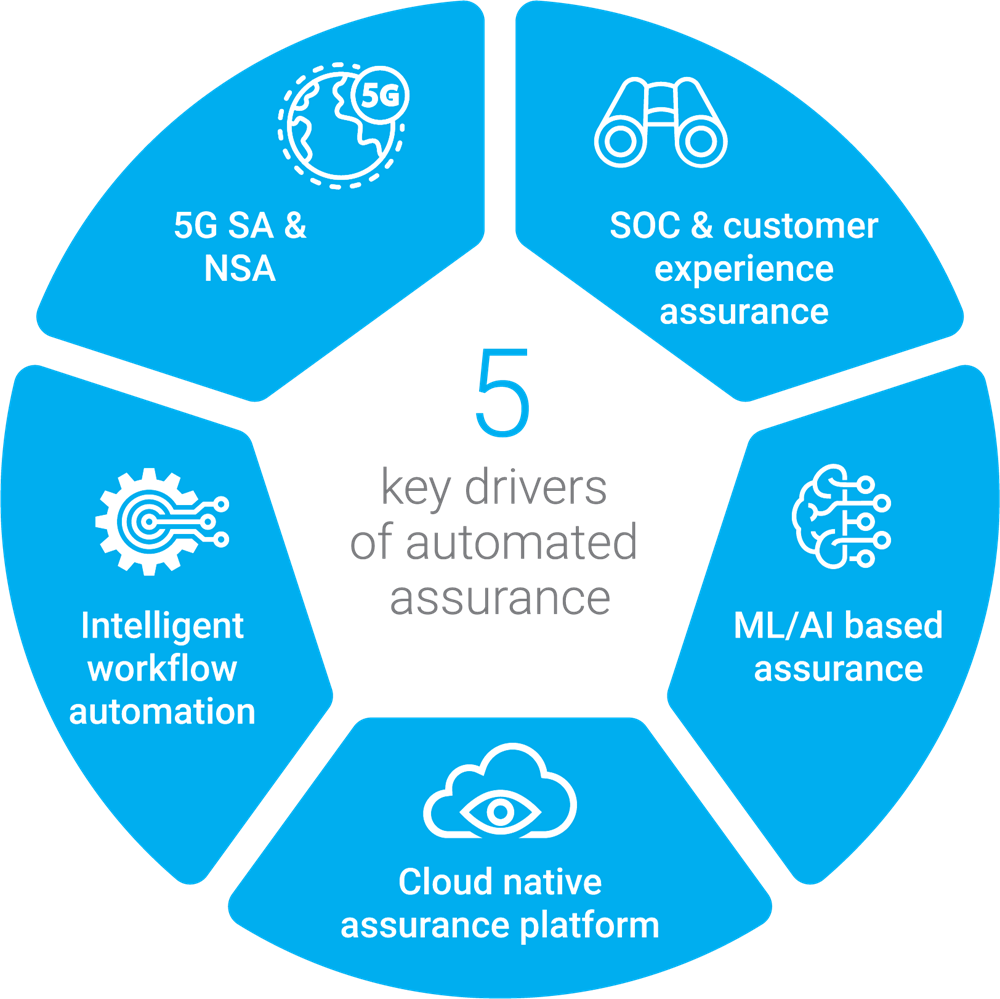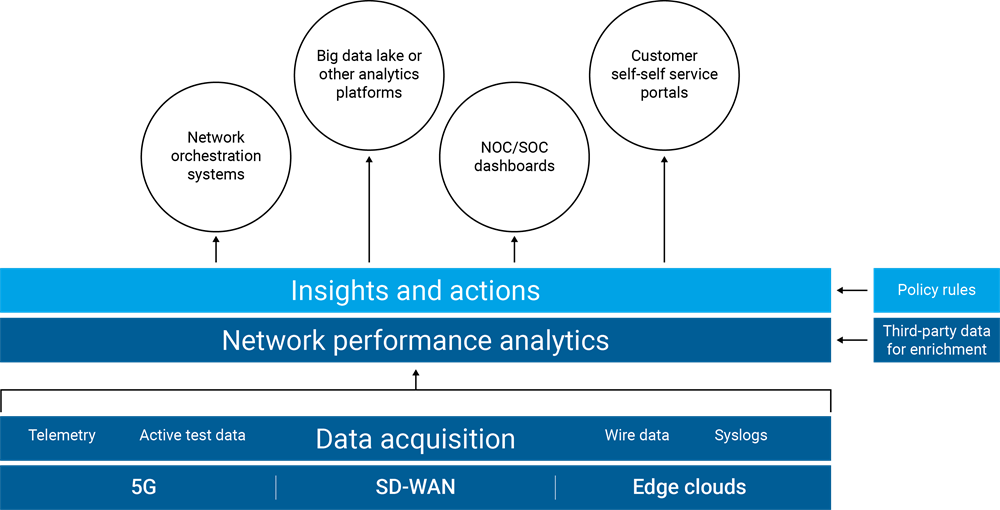Leadership in 5G service assurance and beyond
In September, EXFO had the opportunity to sit down with William Nagy, an analyst with the Telecom Software and Networks Research team at Analysys Mason, to get his take on the automated service assurance market for communication service providers (CSPs) and the transition to 5G services.
According to William Nagy, “the five most pertinent drivers of the automated assurance market are evolution to a cloud-native assurance platform, the migration to service operations centers (SOC) and customer experience assurance, machine learning and AI-based assurance automation, intelligent workflow automation, and support for 5G standalone (SA) and non-standalone (NSA).”

Image source: “Evolution of the assurance market and the need for AI and automation in the 5G era, Analysys Mason, September 2020.”
William Nagy described a unified assurance platform as the basis for assuring the next generation of dynamic networks and services, adding that “CSPs must move away from a siloed approach for gathering network data to a horizontal, unified analytics platform that ingests and aggregates data from multiple sources in a multi-vendor environment.”
Unified platform for 5G service assurance
From an architectural standpoint, such a unified platform consists of three tiers: a data acquisition layer, a performance analytics layer, and an application layer.
The data acquisition layer consists of data sources, such as network telemetry, wire data and passive and active test data, which is curated to create clean data for the next layer—the performance analytics layer. This second layer correlates the network data to generate reusable data structures and metadata in standard formats, which will feed machine learning and artificial intelligence models, which in turn produce KPI trends and insights, detect anomalies and create predictions in real time.

Image source: “Evolution of the assurance market and the need for AI and automation in the 5G era, Analysys Mason, September 2020.”
The application layer then consumes the generated insights from the performance analytics layer and produces NOC/SOC dashboards, feeds into big data analytics platforms, and importantly, triggers automated actions in the network orchestration systems to enable closed loop automation. Of course, this platform must be cloud-native to support all the cloud-native functions it will be assuring.
New opportunities for leadership
Communication service providers’ transition to 5G brings new opportunities for leadership in telecom service assurance solutions. The ability to integrate data from a broad variety of sources, including network telemetry, passive and active monitoring data, even CRM data, is a critical first step to achieving that leadership. However, to make sense of this flood of data—particularly in real time—requires new solutions, ones that put machine learning and artificial intelligence at the center of the action. EXFO’s Nova Adaptive Service Assurance (A|SA) platform, consisting of solutions such as Nova SensAI, Nova Context, and Nova Geolytics among others, is just such a platform.
EXFO covers all the bases
According to William Nagy, “When we compare the capabilities of EXFO's platform, with that of the unified platform described earlier, we can see that adaptive service assurance has many of the same qualities, which is where EXFO differentiates itself in the market. The EXFO solution covers all layers from optical to applications, as well as all domains from the core to the subscriber. It has root cause analysis, real-time reporting, advanced customer experience and subscriber impact analysis, as well as supporting a diverse range of real-time data sources. All of which I have noted are key aspects of assurance in the 5G era.”




